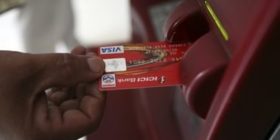Demonetization is like an earthquake that refuses to stop despite shaking all of us down to our very core. It struck the Indian subcontinent on November 8 and we’re all still reeling from subsequent aftershocks, with no immediate relief on the horizon.
One of the undoubted silver linings of the fallout surrounding demonetization is the push towards the adoption of e-wallets (digital wallets or mobile wallets). With hard cash in short supply, services like Paytm, MobiKwik, FreeCharge, Oxigen, Ola Money, and others, that allow you to withdraw and park your money and pay for services digitally have received a massive boost over the past three weeks. And the number of users adopting e-wallets is only going to increase in the coming months.
Having said that, there’s no doubt that a large swathe of our population has deep-rooted security concerns when it comes to transacting online. This remains a major hurdle faced by all e-wallet services, as people’s habits are difficult to change.
Is security really a cause for concern with e-wallets?
Not really. They’re as safe or vulnerable as your physical bank account. And RBI restrictions ensure e-wallets pretty much tow the same line as all Indian and international banks that conduct online business within the geographical boundary of the nation. If you’ve ever engaged in an online credit card or debit card transaction, e-wallet apps and services largely conform to the same security norms. And more.
For instance, Paytm logs you out after performing a digital transaction (just like your banking app would) through your smartphone. What’s more, it offers 2-step authentication by default (which is great) when you log into the app. Similarly, MobiKwik is famous for incorporating the iPhone’s fingerprint sensor as part of its user authentication process on its iOS e-wallet.
Both these examples of 2-step authentication (where a secure PIN is SMSed to your phone, separate from the app login password) and the use of biometrics are good initial defences to have at the end user level. Both will prove useful (but not exactly foolproof) in cases where you physically lose your phone.
What else can consumers do to protect their e-wallets?
“While on-the-go tools such as mobile banking apps and digital wallets make managing financial tasks easy, one must also take necessary precautions and follow best practices while accessing sensitive financial information anytime, anywhere,” according to Ritesh Chopra, Country Manager, Norton by Symantec — a global security vendor.
Mr Chopra further mentions that as much as 79 percent of consumers know they must actively protect their information online, but they still share passwords and engage in other risky behaviour. “Infact, 30 percent Indians have also agreed to sharing their banking account passwords with someone else. Additionally, close to one in five (18 percent) consumers have at least one unprotected device, leaving their other devices vulnerable to ransomware, malicious websites, zero days and phishing attacks,” he said





Leave a reply